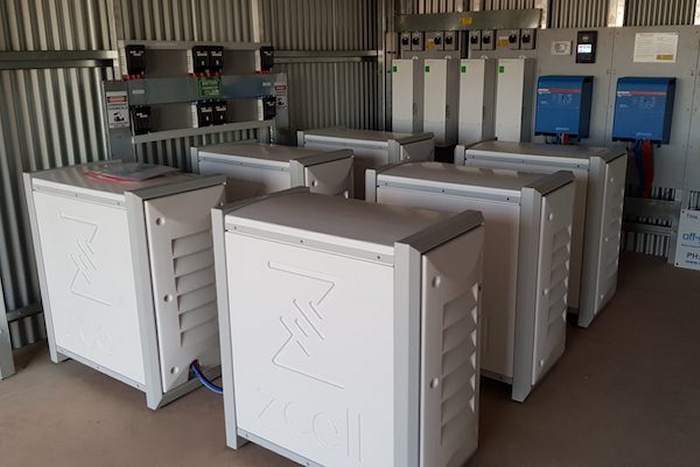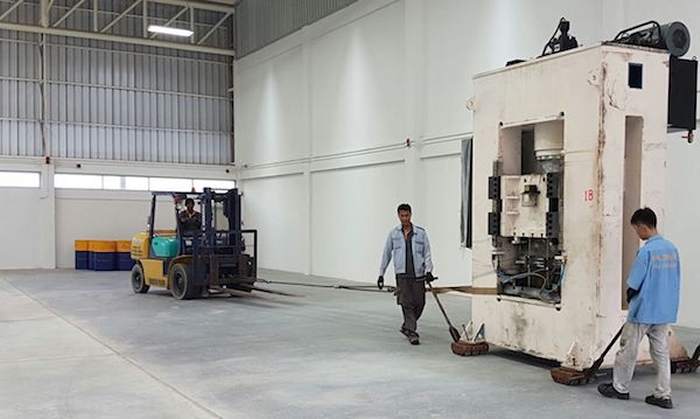Australian energy storage company Redflow has announced the largest residential installation to date in the country of its ZCell solar battery solution.
The six-battery, 60 kilowatt-hour ZCell energy storage system was installed for the Bates family at their new house near Wallumbilla in Queensland.
Redflow states the Bates’ off-grid solar + storage system provides the family complete energy autonomy and consists of the Redflow ZCell batteries, a pair of Victron Quattro 48/10000 inverter/chargers and 72 x 260 watt Tindo solar panels. The solar aspect of the system boasts 18.72 kilowatt peak (kWp) capacity.
The solar + storage project was installed by Off Grid Energy Australia.
Breeann Bates said the difference between running mains power to the family’s new house (a distance of approximately 2.7 kilometres) and installing solar + storage was negligible.
Redflow Global Sales Director Andrew Kempste stated the company was seeing an increasing number of enquiries from customers wanting an off-grid energy storage solution.
“They recognise the benefits of ZCells including their tolerance of hot climates, their ability to discharge 100 per cent of their power without damaging the battery and the fact that they retain their full storage capacity for many years.”
Thailand Battery Facility Progressing
In other recent news from Redflow, the company announced last week installation of battery production equipment had commenced at its new factory in Thailand.
Redflow says it has signed a three-year lease on a 1,500-square-metre building at the Hemaraj Chonburi Industrial Estate. Part of the IEAT free trade zone, the Estate is situated 110km southeast of Bangkok and 25km from the Laem Chabang deep sea container port. It’s an area designated for industrial or commercial operations where tax and duty concessions are provided to companies manufacturing for export.
Redflow says it is on track to begin initial operations in Thailand by the end of this year. The company announced it was shifting its battery manufacturing from North America to South East Asia in May and Thailand was eventually chosen as its new manufacturing base; due to the country offering suitable manufacturing expertise, logistics and favourable tax treatment for international manufacturers.
Leadership Changes
Another major recent change for the company was in CEO. As part of a restructure of Redflow’s leadership team, acting CEO Simon Hackett stepped aside from the role in late September. Taking his place was Chief Operating Officer, Richard Aird. Mr. Hackett will continue with the company as a non-executive director and in a technology oversight capacity.
“With running the business and the Board now in the hands of professionals in those fields, I can focus my passion, skills and energy on successfully overseeing the interface between Redflow’s unique technology into real-world energy systems, and communication of these benefits to customers and industry,” said Mr. Hackett last month.
Redflow also recruited Brett Johnson to its Board as Independent Non-Executive Chairman to replace Mr. Hackett.



 RSS - Posts
RSS - Posts



And here I thought Reflow was announcing a new 60 kWh battery system product 🙁
Could you at least give us a price on what the battery installation part cost? Maybe an overall cost too?
… including battery , battery management, inverters , and shed.
I’ve been following the redflow stuff with great interest.. seems much more sustainable moving forward.
I think the integration aspect is going to be a key component as power systems mature, and Simon’s background seems to fit well here.
Having a “power manager” turn on/off various parts of the house will become standard fare I reckon. We’re already seeing smaller nibbles with standalone systems for pool pumps, freezers, hot water systems etc… at some point they should all be able to be integrated with a few network cables and standard protocols.
the sooner we move away from bespoke solutions, the better off we’ll be.
@T
I would estimate the cost of the 6 Zcells to be approx $80-90k plus the whole install to be close to $140k-150k. It’s a lot of money to invest isn’t it?
Pole and wires to cover that distance would almost cost that much and then you pay for the power, over in WA it costs about $20k a pole so the price quickly adds up
And even once you have the poles and wires, you haven’t covered your ongoing costs. The cost of maintaining the battery and solar system will probably still be much lower than the charges for grid power.
This is very interesting in how it points to a possible future direction for a lot more rural electrical infrastructure. There certainly is a case that we need to re-think electricity provision as we currently understand it. The idea of a grid that reaches everywhere may require some rethinking over time.
Hi Michael,,, I would have done it differently,,,, depending on the ground and terrain,,, but a large machine like a chain saw would have trenched the distance in a day, including burying the cable,,, a SWIRL, single active line and use ground return. A small fraction of the cost the two other alternatives.
Cheers
john nielsen
We don’t know the terrain/vegetation that the electricity mains would have had to traverse. Those 2.7km might have required above-ground cabling.